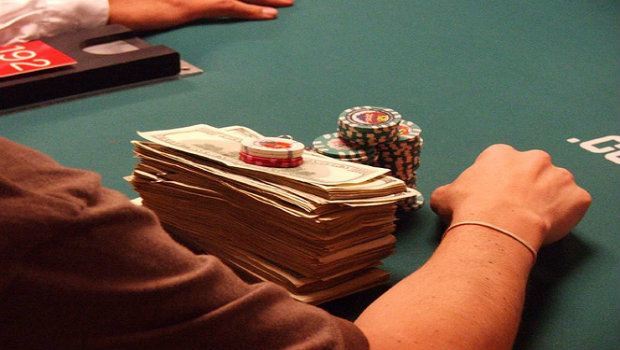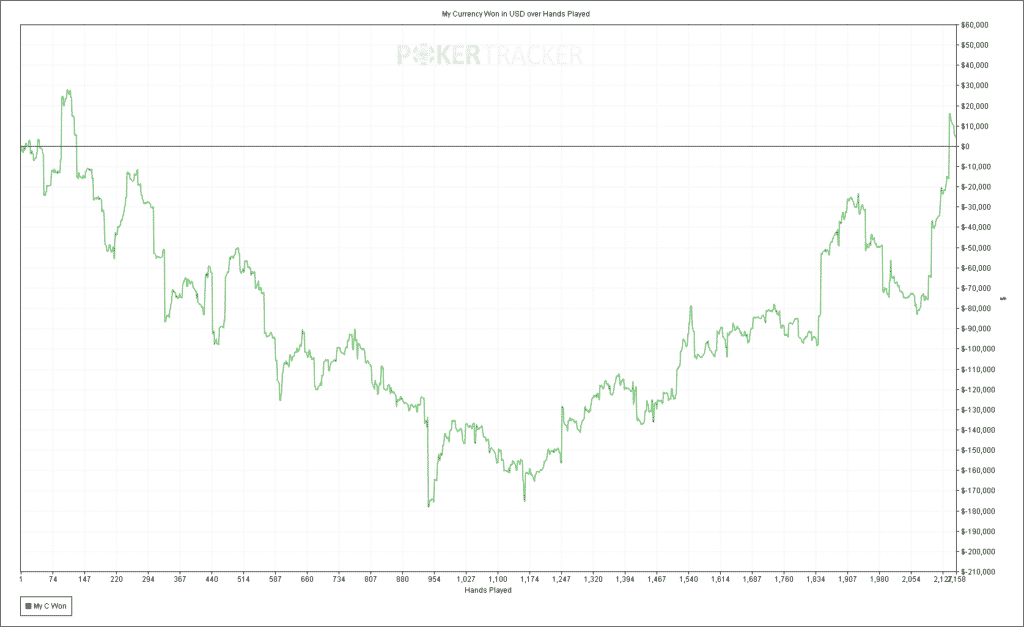No Limit Hold Em Cash Game Strategy
For No Limit Hold'em ring games, you should keep at least 50 buy-ins for the stakes you play in your account at all times. If you are a $0.50/$1 player, you should have $5,000 in your account to avoid. Soft no limit tables if you know what to look for and are familiar with some of the players seated at the table. We covered limit games in the last section, so here are some strategy tips for no limit Texas holdem cash games. Limit games have a set betting limit. The one caveat to all these strategy tips is that in no limit hold 'em, there are no absolutes. Certain situations will require you to deviate from the optimal strategy that was given above.
Many players have strong opinions about the impact rake has on our no-limit hold'em earn rate. Since actual data is the best way to answer such a question, I gathered hand histories from Las Vegas $1/$2 and $2/$5 no-limit hold'em cash games. Overall, I analyzed nearly a thousand hands taken from four Las Vegas cardrooms at various times of the day and on various days of the week. There were differences among the cardrooms, but I will only summarize the averages here.

$1/$2 No-Limit Hold'em Rake
Stats for Las Vegas $1/$2 NLH games are summarized the first column below. This is based on a 10 percent rake, up to a maximum of $4, as long as there was a flop. A $1 jackpot drop was also taken whenever a rake was taken. A total of 71 percent of these hands were raked, so there was also a jackpot drop 71 percent of the time.
| $1/$2 NLH: $4 Rake | $1/$2 NLH: $5 Rake | $1/$2 NLH: $6 Rake | $2/$5 NLH: $4 Rake | |
|---|---|---|---|---|
| Rake: $ / Hand | 2.16 | 2.46 | 2.72 | 2.92 |
| Jackpot-1: $ / Hand | 0.71 | 0.71 | 0.71 | 0.85 |
| Jackpot-2: $ / Hand | 1.33 | 1.33 | 1.33 | 1.46 |
| Avg. Pot: $ / Hand | 50.39 | 50.09 | 49.83 | 153.10 |
| Est. Avg. Profit: $ / Hand | 33.26 | 33.06 | 32.89 | 101.05 |
| Equity Rake: $ / Hour | 9.86 | 11.22 | 12.40 | 13.99 |
The average rake was $2.164 per hand, the average number of players was 8.78 per hand, and the average dealing rate was 40 hands per hour with an auto-shuffler. Therefore, the average player won 4.56 hands per hour. Accordingly, the average amount of rake paid per player was $9.86 per hour. I call this the 'equity rake' for the game.
No Limit Hold Em Game
Equity rake is the average rake the players paid per hour. But individual players vary from this depending on their playing styles. For example, a tight player will play fewer hands and probably win fewer pots per hour, so his equity rake is probably smaller. Nevertheless, we can learn a lot about the impact rake has on our win rate by studying Mr. Average.
Let's consider Tom Terrific, an extremely good player earning $20 per hour. He would then make about $30 per hour if he could play without a rake. So rake takes an incredible 33 percent from Tom's pre-rake profit, a big factor in his earn rate.
Now let's consider Solid Sam, a decent player making $5 per hour. His pre-rake profit would be $15 per hour and his rake tax would be about 67 percent, double Tom's tax rate. Talk about a regressive tax!
Or we can consider Mediocre Max, a break-even player. His pre-rake profit would be $10 per hour and the rake tax takes all of it.
So the impact rake has on our profit depends on how profitable we are.

Suppose the bell curve distribution of win rates for all NLH cash game players is symmetrical. In that case, the average Vegas $1/$2 player loses nearly $10 per hour, or 5 big blinds per hour, entirely due to the rake. So Max must be much better than mediocre in just to break even. This clearly illustrates that we must be significantly better than average in order to overcome the rake.
$2/$5 No-Limit Hold'em Rake
One possible solution to our rake problem is to move up in stakes. The right-most column in the table shows the stats for Vegas $2/$5 NLH. We can see that in those games the average rake is about one-third higher in terms of dollars. But the average rake is much smaller in BBs or as a percentage of the average winning pot size.
Let's consider Tom Terrific again, Tom makes $40 per hour in $2/$5, slightly worse in BBs per hour than he earned playing $1/$2. He would then make about $54 per hour if he could play without a rake. So rake takes a somewhat lower 26 percent of his pre-rake profit.
Perhaps Solid Sam can make $10 per hour playing $2/$5. His pre-rake profit would be $24 per hour so his tax rate would be 58 percent, also slightly better than his $1/$2 tax rate.
Another way to look at this is that the average $1/$2 player loses about 5 BB per hour, but the average $2/$5 player loses about 2.8 BB per hour. In other words, the rake has a smaller impact on his $2/$5 win rate.
But let's not lose sight of the most important parameter here: our hourly win rate. A player who can eke out a small $1/$2 profit may well be a loser in the tougher $2/$5 game.
Increasing the Rake
A rake increase at our local cardroom would be depressing to contemplate. Some Vegas cardrooms already take a $5 rake, and it can be even larger in other parts of the world. When we see the impact this has on our bottom line, we may wish to reconsider which cardroom we frequent.
The middle columns in the table estimate the cost of a 10 percent rake, up to a maximum of $5 or $6. At first glance, these higher rakes don't seem to be too terrible, increasing the rake per hand only modestly. However, when we consider the equity rake per hour, the average player loses and additional $1.36 per hour for just a $1 maximum rake increase. A $2 rake increase leads to an additional $2.54 per hour average loss in win rate.
We might also expect that a winning player will win a dollar or two less per hour with these higher rakes. But it could be even worse if the higher cost induces the worst players to leave the game, enriching the quality of the remaining player pool.

Jackpots
Our situation seems even bleaker when we consider the jackpot drop. The Jackpot-1 stat refers to taking a one dollar jackpot drop whenever there is a rake drop. We can see that this averages to about $0.71 per hand, which would be an 'equity jackpot' cost of about $3.24 per hour. This is even worse when a second jackpot dollar drops when the pot reaches $30, the Jackpot-2 stat.
Altogether, these 'taxes' cost the average $1/$2 player about $13 per hour with a $1 jackpot drop, and it costs him about $16 per hour with a $2 jackpot drop.
However, nearly all of the jackpot money is returned to the players by way of jackpot payouts. So our equity jackpot losses should not be part of our thinking as long as we participate in all the jackpot opportunities the cardroom provides.
Suppose the cardroom has a $300,000 'freeroll' tournament requiring 120 hours of play to qualify. This tourney is funded by the jackpot drop from as many as 430,000 dealt hands, so it represents a big chunk of the total jackpot money collected.
If we play insufficient hours to qualify or don't bother to play the freeroll, our share of the prize pool can never come our way. For 1,000 entrants, that would be $300 per player for perhaps 100 hours of qualifying play. Clearly, many players have subsidized the tourney players. So when a cardroom offers such a freeroll, we should make sure we qualify and play, otherwise a big portion of our jackpot 'contribution' can never come back to us.
Another common example is 'Quad-flopper Tuesdays,' where a cardroom pays a $500 jackpot for flopping quads on a Tuesday. If we never play on Tuesday, we are subsidizing those players who do. By piling up our playing hours on days with special jackpot promotions, we are the players being subsidized by players who don't.
Finally, we sometimes see a progressive bad beat jackpot that can become a huge windfall for some lucky player. I don't favor the progressive jackpots because they can take a huge chunk out of the total jackpot pool, and that jackpot money usually leaves the poker community. Furthermore, a large jackpot will automatically trigger a federal income tax liability. Although the live-changing nature of a huge jackpot will induce many players to chase it, I would prefer to see smaller payouts. The $500 quad-flopper jackpot won by a poor player will likely reach our own stack eventually.
Conclusion
Rake and jackpot drops have a major impact on our low-stakes NLH profitability. They are the driving force dictating that few players are winners. But since we don't generally have the option to play rake-free, all we can do is to play where the rake is smallest. And we can minimize our jackpot tax by exploiting every opportunity to win a portion of the jackpot prize pool.
Steve Selbrede has been playing poker for 20 years and writing about it since 2012. He is the author of five books, The Statistics of Poker, Beat the Donks, Donkey Poker Volume 1: Preflop, Donkey Poker Volume 2: Postflop, and Donkey Poker Volume 3: Hand Reading.
Tags
cash game strategyno-limit hold’emrakewin ratebankroll managementjackpotslive poker
No Limit Texas Hold'em is the most popular poker game in the world, and it is played in both tournament and cash game form. This page links to strategy articles for No Limit Hold'em cash game players, although many of the principles can apply to No Limit Hold'em tournament strategy as well.
In case you don't know, cash games are the opposite of tournaments: instead of playing with tournament chips, players actually buy in with cash-value chips, and can enter and exit tables whenever they like. The goal at a ring table is to win chips consistently, as opposed to the goal in a tournament where players try to accumulate every single chip. The following No Limit Hold'em strategy articles will get you on top of your game:
General No Limit Hold'em Strategy:
Here are some articles that will teach you the basics of No Limit Hold'em:
- No Limit Hold'em Tips - Read this article to get a quick overview of our best NL Hold'em tips.
- How to Spot Bluffs - Learn some quick tips on spotting opponents' bluffs.
- Buy-In Strategy - Find out if you're better off short-buying or deep stacking at NL Hold'em tables.
- Continuation Betting - The continuation bet may be the most important move in poker.
- Value Betting - Learn all about value betting, which is a great profit move to earn extra money.
- Double Barreling - Learn when you should double barrel on the turn, and when to give it up.
Playing Specific Hold'em Situations:
Also learn how to play specific No Limit Hold'em situations:
No Limit Texas Hold'em Games
- Playing Big Pairs Preflop - Learn how to play Aces, Kings, and Queens in preflop situations.
- Playing Big Pairs on the Flop - Learn how to play Aces, Kings, and Queens on different flops.
- Playing Middle Pairs Preflop - Learn how to play 77-JJ in different preflop situations.
- Playing Middle Pair on the Flop - Playing a mediocre hand on the flop is tough - learn how here.
- Playing Small Pairs Preflop - Learn how to play 22-66 in different preflop situations.
- Playing Small Pairs on the Flop - Most people think small pairs are for making a set or folding.
- Playing Draws - Learn the best methods for playing flush, straight, and other combo draws.
- Making Sets on the Flop - Once you finally make a set on the flop, extract the most money.
- Playing Suited Connectors - Hands like 56s can be tough to play, but also win the largest pots.
Playing Specific Hold'em Opponents:
No Limit Hold Em Strategy
Now learn how to play against specific No Limit Hold'em opponents:
- Facing a Preflop Raiser - Calling a preflop raise puts you in a tough spot - learn how to deal.
- Playing Against a Maniac - We've all encountered maniacs at the tables. Now you can beat them.
No Limit Hold'em Rules
If you have never played Texas Hold'em before, make sure to read our article 'The Rules of Texas Hold'em' before you dive into the strategy articles. That page will teach you how to play the game, and will help new players understand the rules and structure of Texas Hold'em. After you learn the rules, then you can read the No Limit Hold'em strategy articles above to get some great tips for winning at the tables.
Playing Tight/Aggressive
The best and quickest way to improve your No Limit Hold'em strategy is by adopting a tight and aggressive approach at the tables. What this means is that you wait for solid hands, and then play then aggressively. This allows you to win the most money, because when the money goes in you will have a solid hand, and you also won't be pushed around by other aggressive players because they will respect your aggression.
No Limit Hold'em Cash Game Strategy
Play Within Your Limits
Another simple way to avoid going broke is to always remember your bankroll, and make sure to stay within its limits. For No Limit Hold'em ring games, you should keep at least 50 buy-ins for the stakes you play in your account at all times. If you are a $0.50/$1 player, you should have $5,000 in your account to avoid going broke. This may seem excessive for casual online players, but players serious about maintaining a bankroll follow that advice.